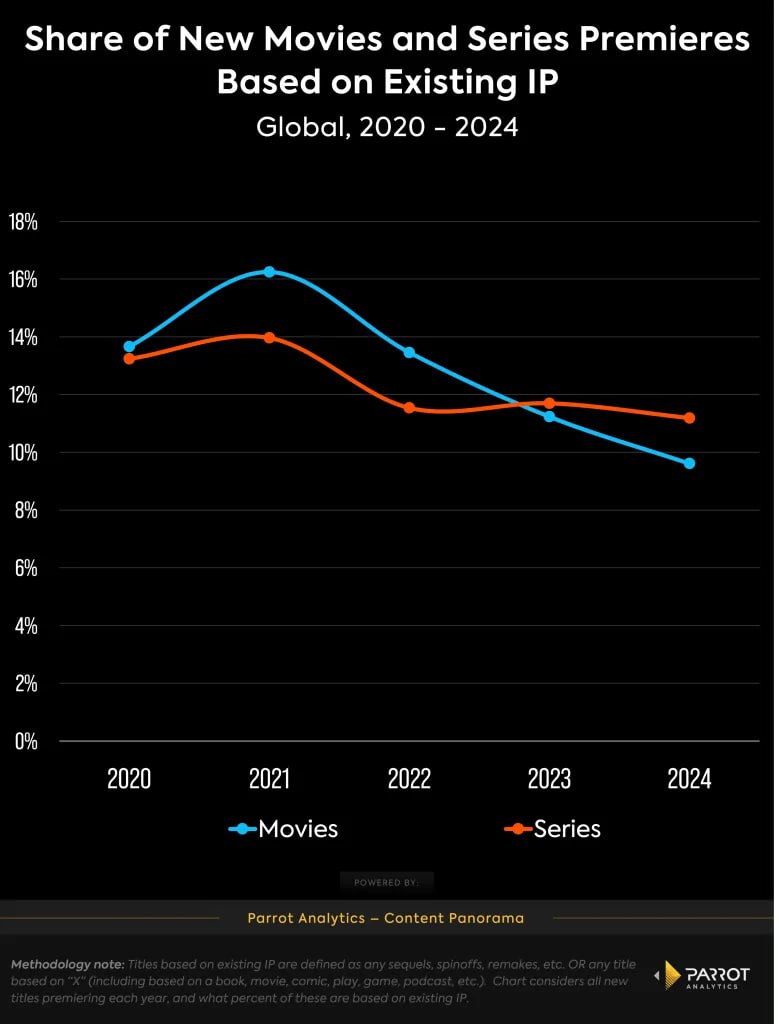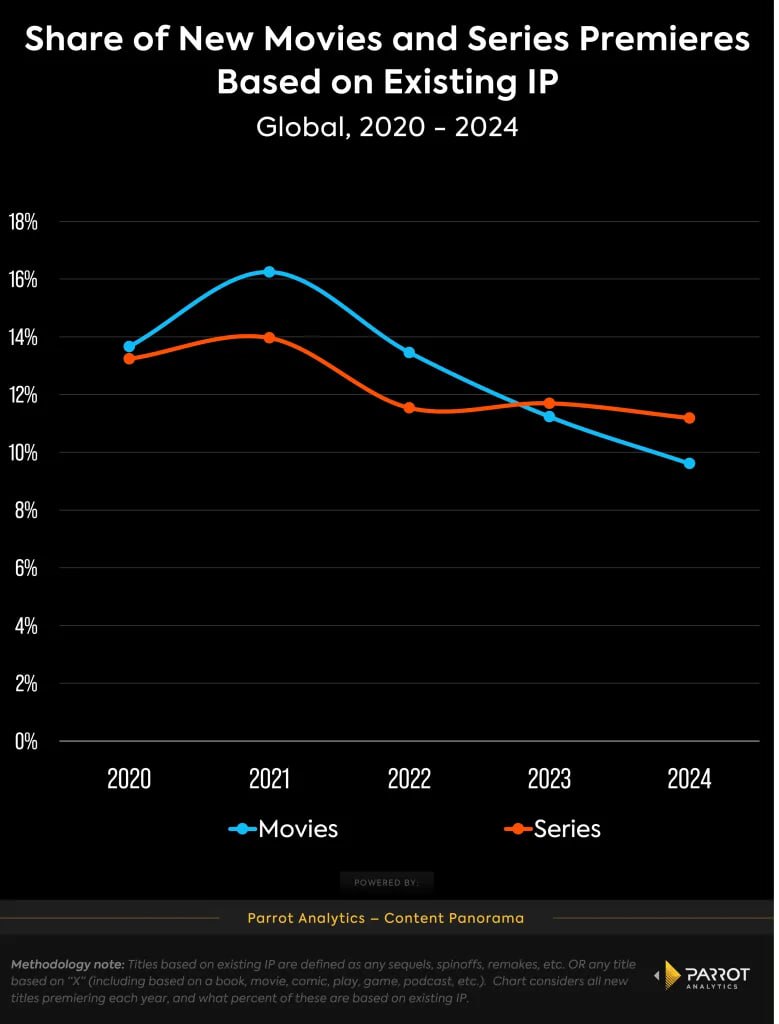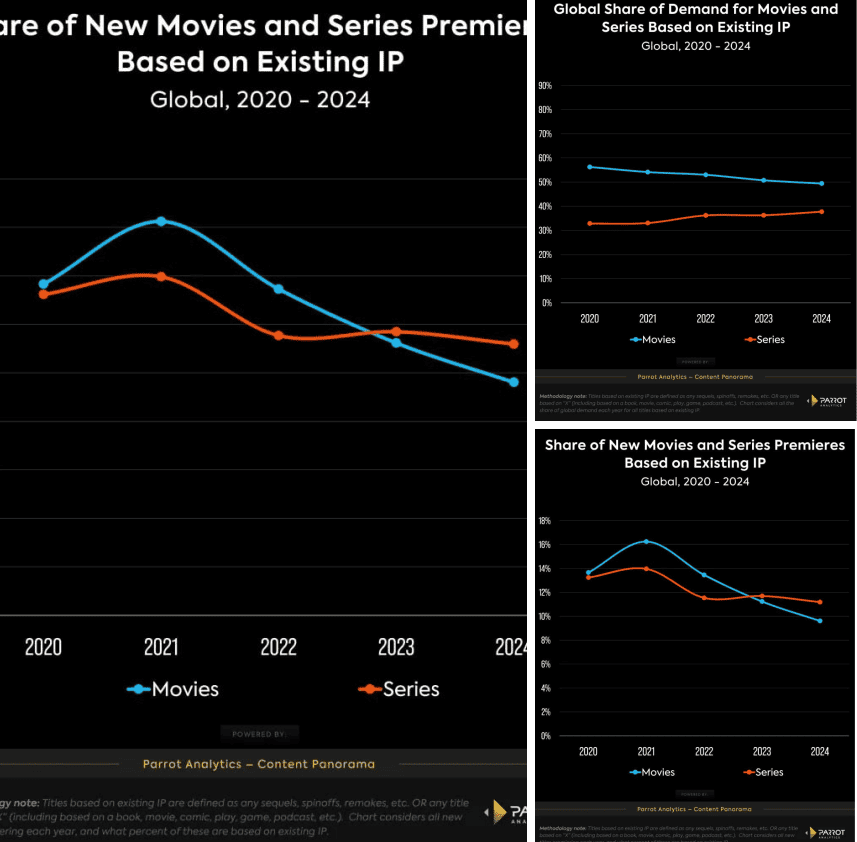At first glance, it might seem like the entertainment industry is drowning in remakes, sequels, and spin-offs, leaving little room for fresh creativity. Yet, the numbers tell a different story.
From 2020 to 2024, only about 12% of new films and TV shows were based on existing intellectual property (IP), indicating a gradual decline in the dominance of franchise-driven content. Despite this shift and a growing appetite for original projects, the majority of audience demand continues to lean heavily toward familiar narratives.

The Decline of IP Dominance — But Not Quite
While the proportion of IP-based releases has dipped, the cultural impact of franchises remains undeniable. This suggests that while studios are experimenting with original ideas, the tried-and-true appeal of recognizable brands still holds strong. The decline from higher IP reliance in previous years reflects an industry effort to diversify, yet it’s clear that audiences aren’t ready to let go of their beloved universes — whether it’s Marvel, Star Wars, or Harry Potter.
Why the Perception of Stagnation?
So, why do we often feel that Hollywood has run out of original ideas? A closer look at the data reveals a key insight: of the 100 most in-demand films each year, over 70% are built on existing IP. These high-profile titles — think blockbuster sequels or reboots — tend to dominate headlines, marketing budgets, and box office charts, making them more visible than original stories.

This visibility creates a skewed perception that fresh narratives are scarce, even as smaller, original projects struggle to break through the noise and capture widespread attention.
The Power of Familiarity
The enduring popularity of franchises isn’t hard to explain. Familiar stories offer comfort, predictability, and a built-in fanbase, reducing the risk for studios and providing audiences with a sense of connection. While original content is gaining traction—think of breakout hits like Everything Everywhere All at Once—it often requires significant marketing or critical acclaim to compete with the juggernaut of established IPs. Industry trends show a push toward innovation, but the demand for recognizable sagas remains a driving force shaping what we watch.
 Also read:
Also read:
- Amazon Doubles Ad Load on Prime Video, Breaking Trust with Users
- Zuckerberg Assembles Team to Build Superintelligence
- Facebook Isn’t Just for Grandpas: The Social Network Still Rules, Despite TikTok’s Rise
Balancing Act for the Future
As of June 29, 2025, the entertainment landscape is at a crossroads. The decline in IP reliance hints at a potential renaissance of original storytelling, yet the overwhelming success of franchise films suggests that audiences still find solace in the known.
The challenge for creators lies in striking a balance — delivering fresh narratives while leveraging the magnetic pull of established worlds.
Until original stories can consistently match the visibility and appeal of franchises, the industry will likely continue to cater to both the craving for novelty and the love for the familiar.
In the end, while we cheer for bold new tales, the data confirms what our viewing habits already suggest: franchises aren’t just surviving—they’re thriving, and they’re here to stay.






